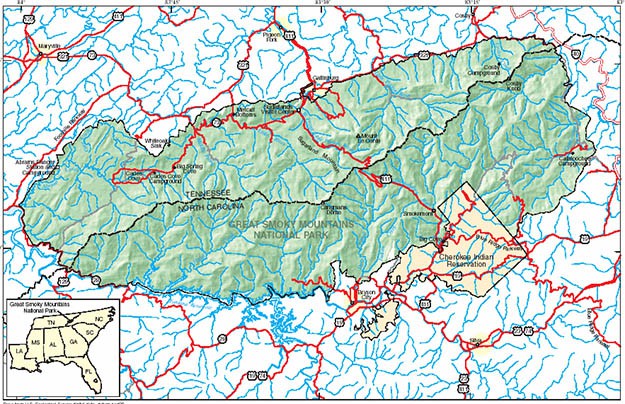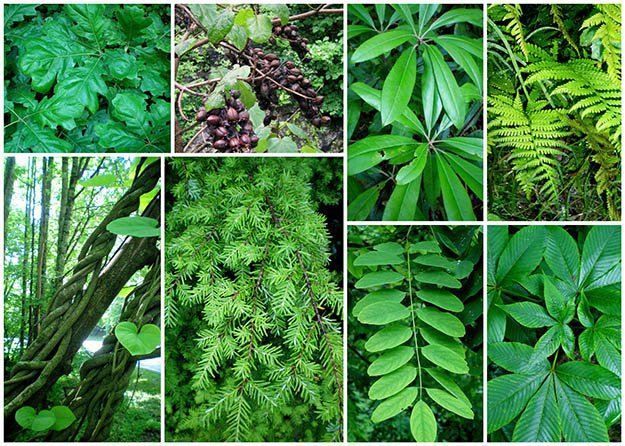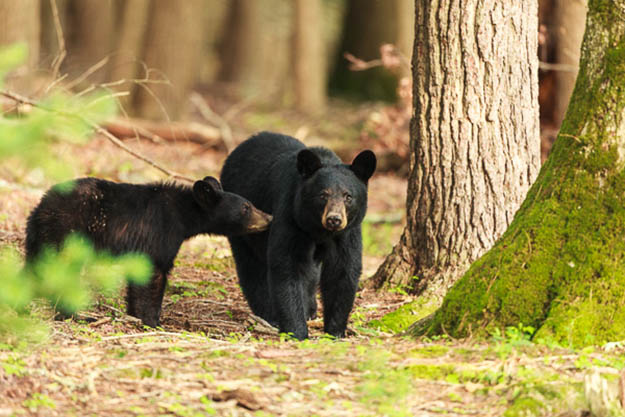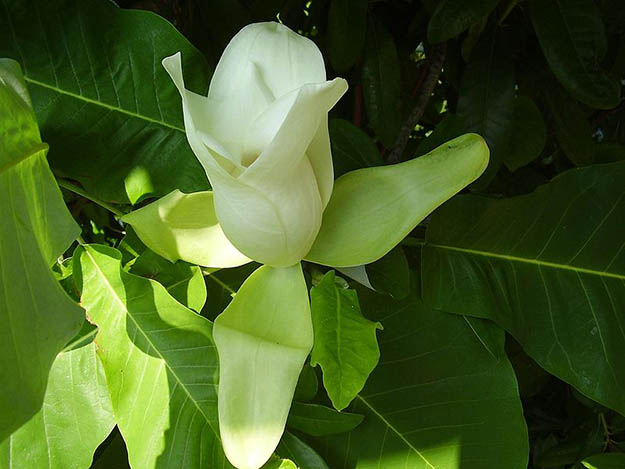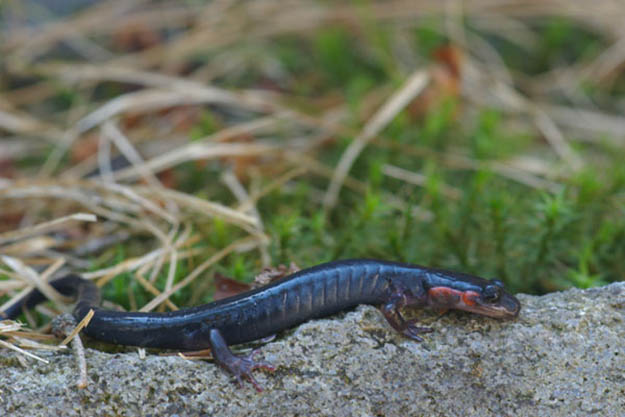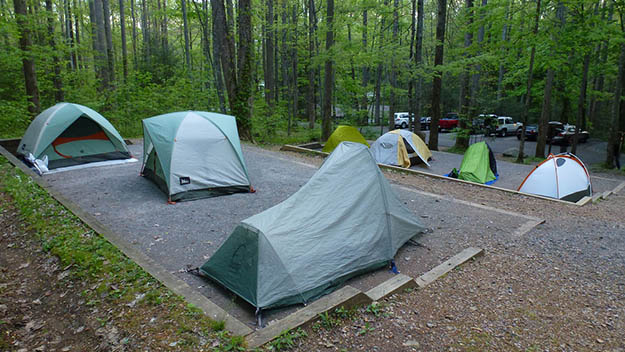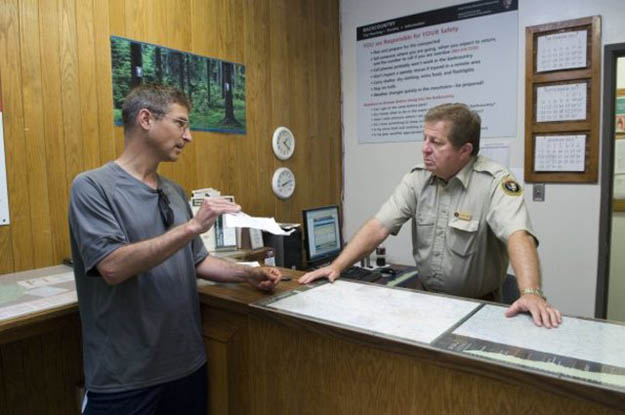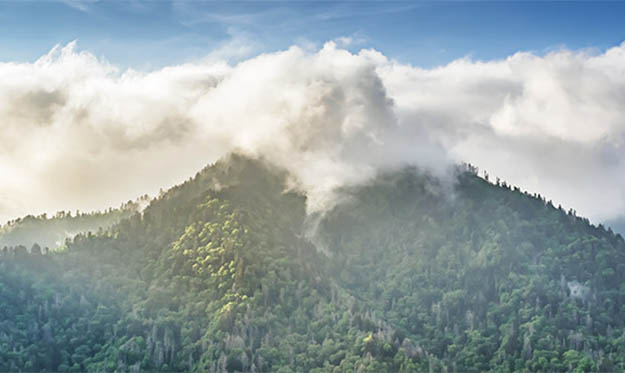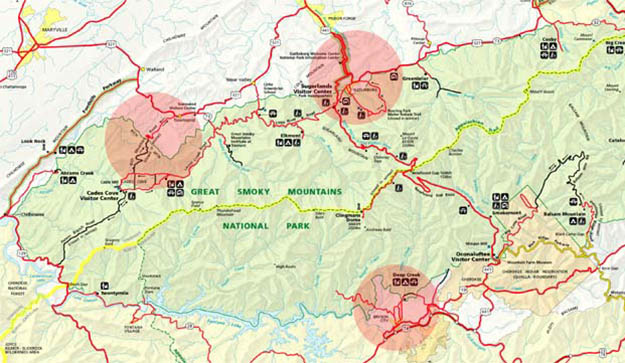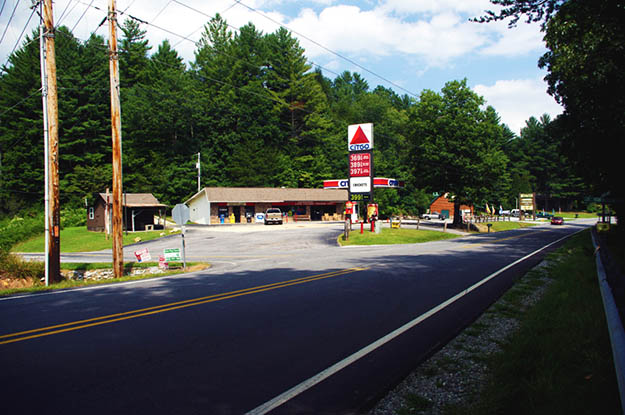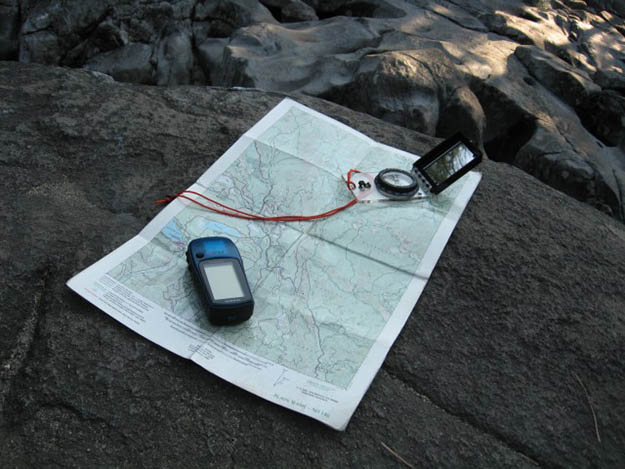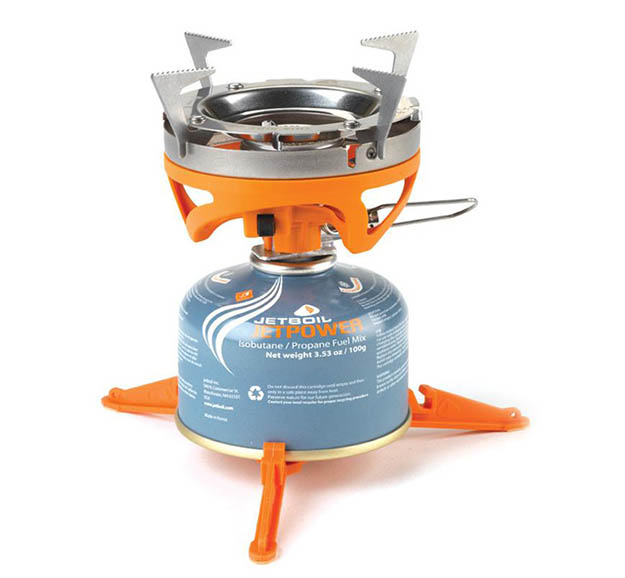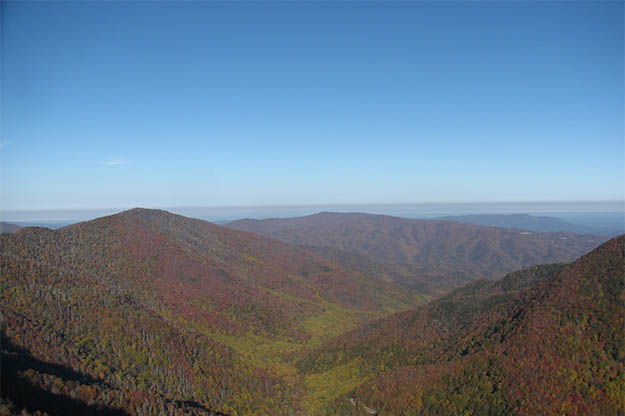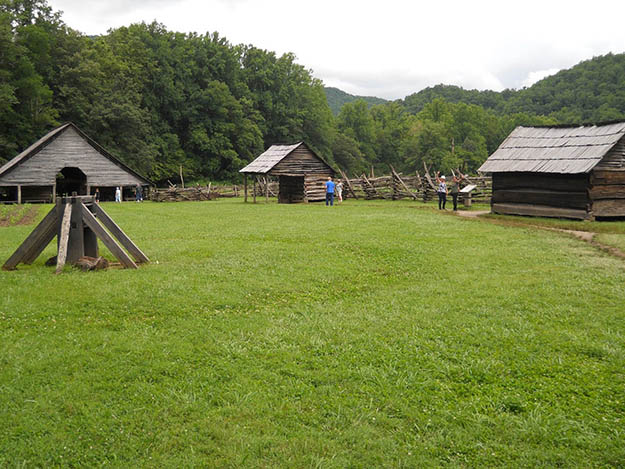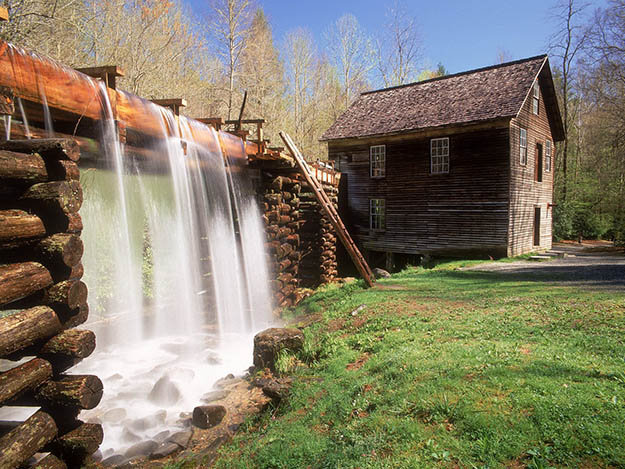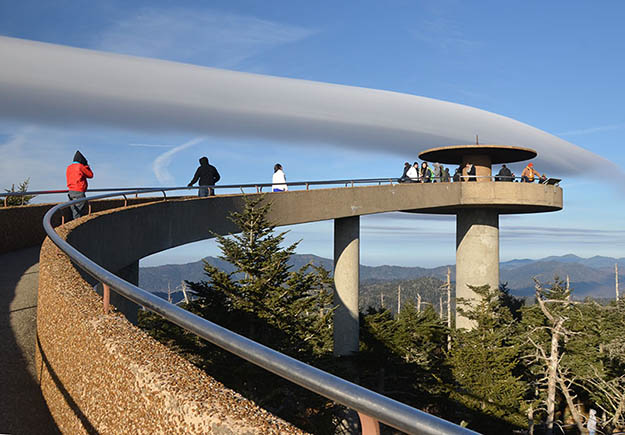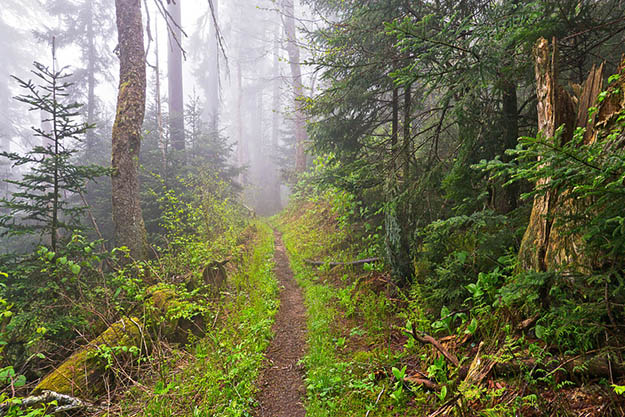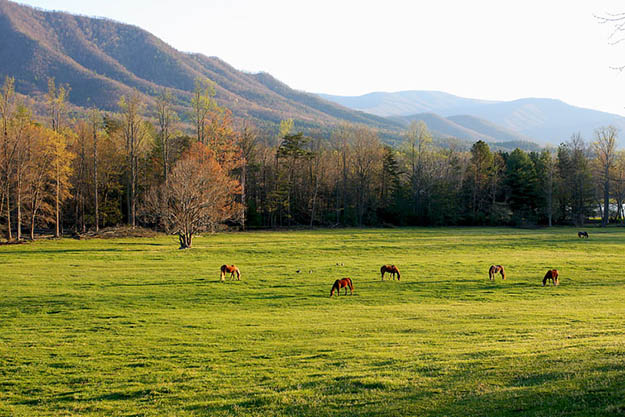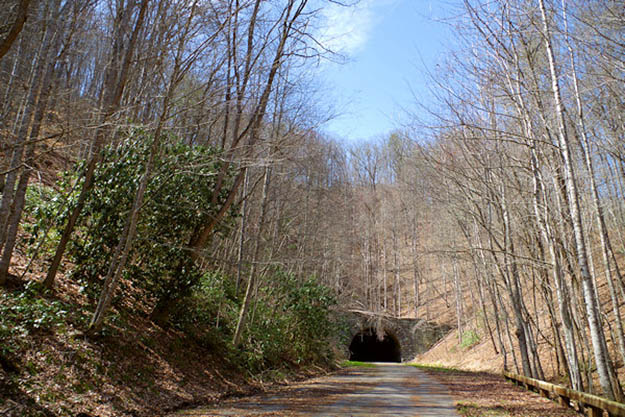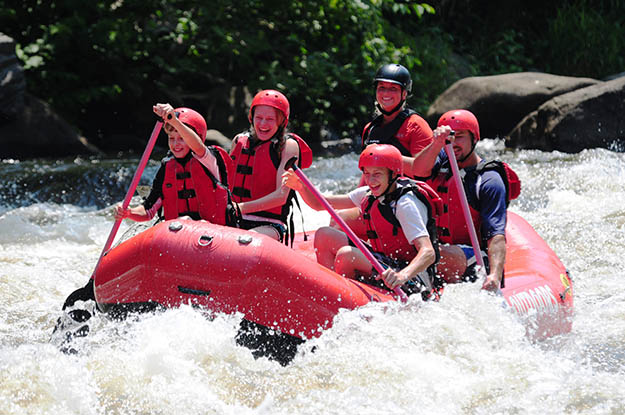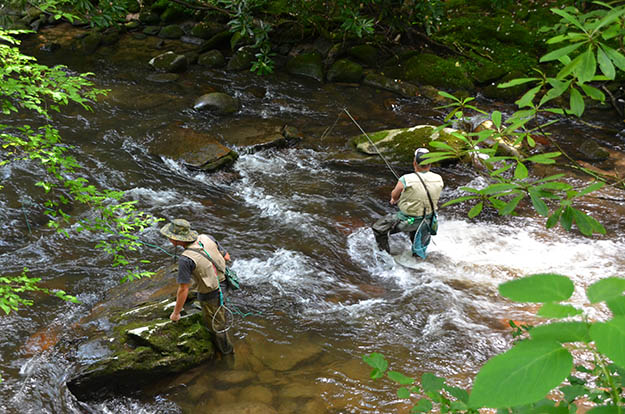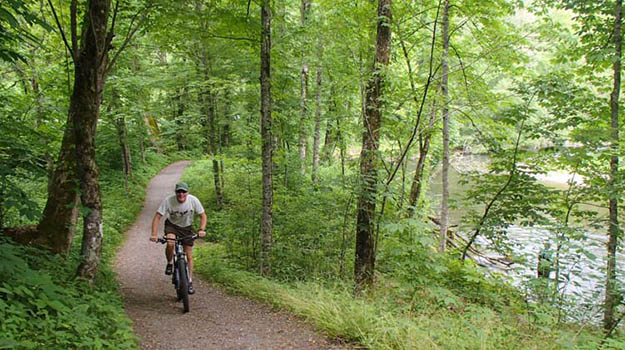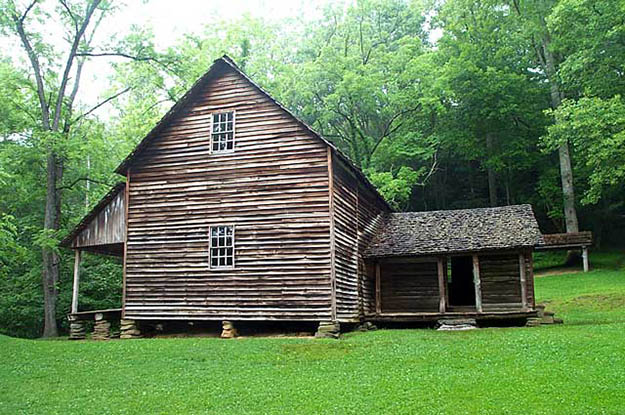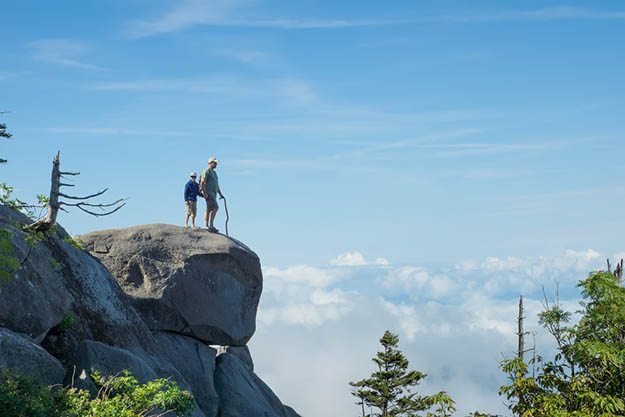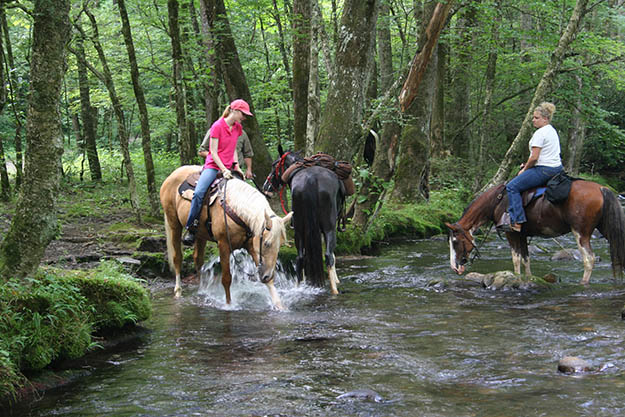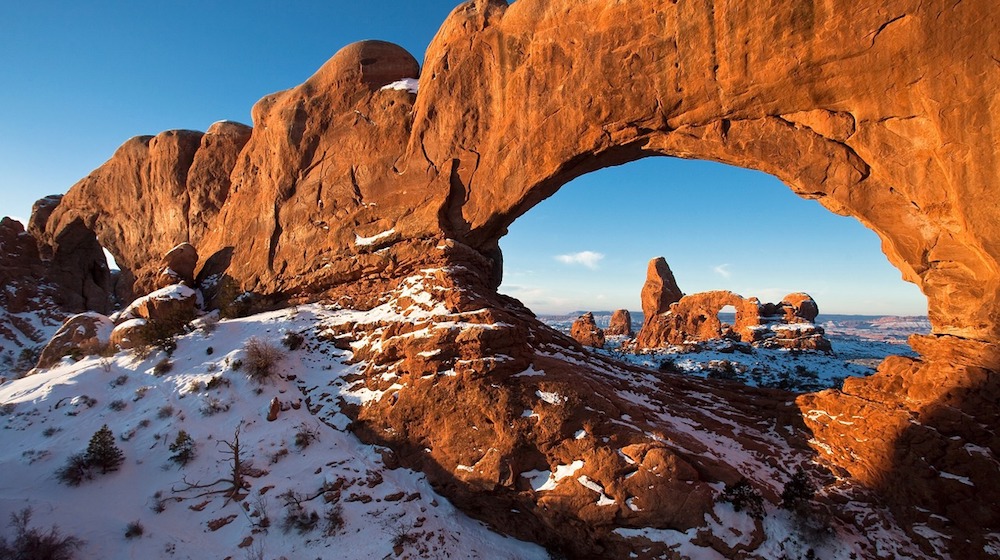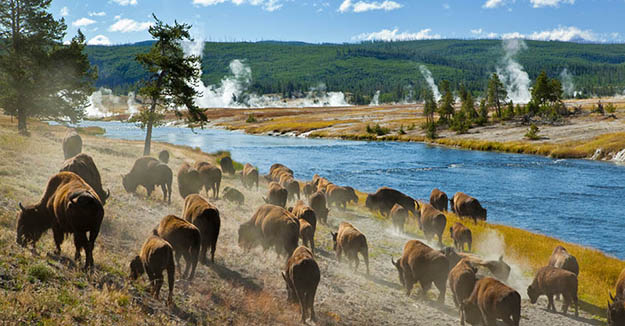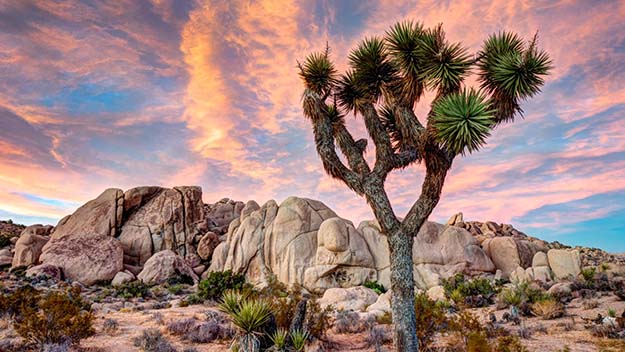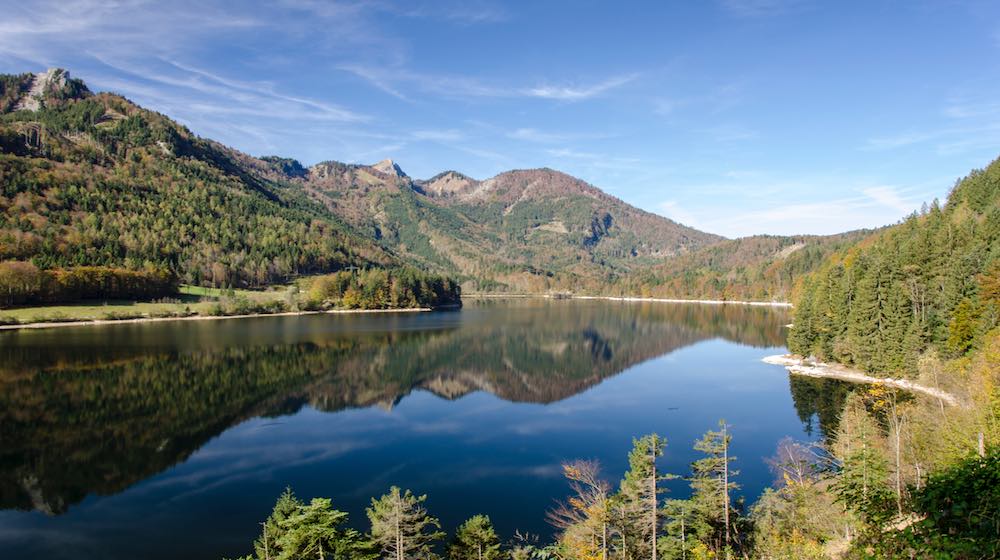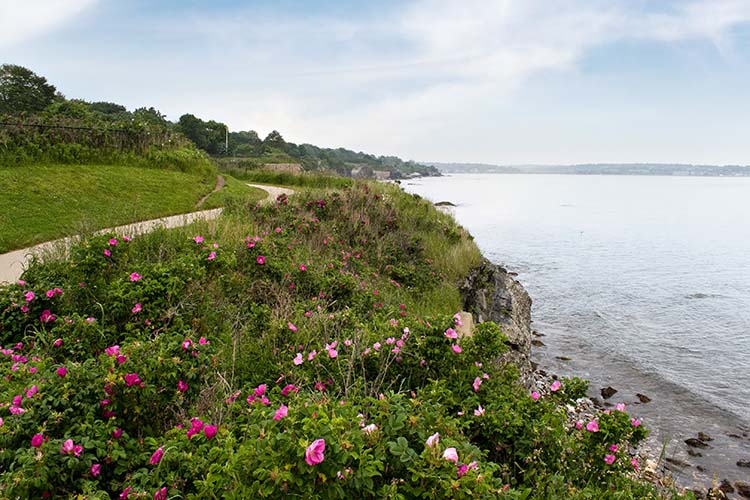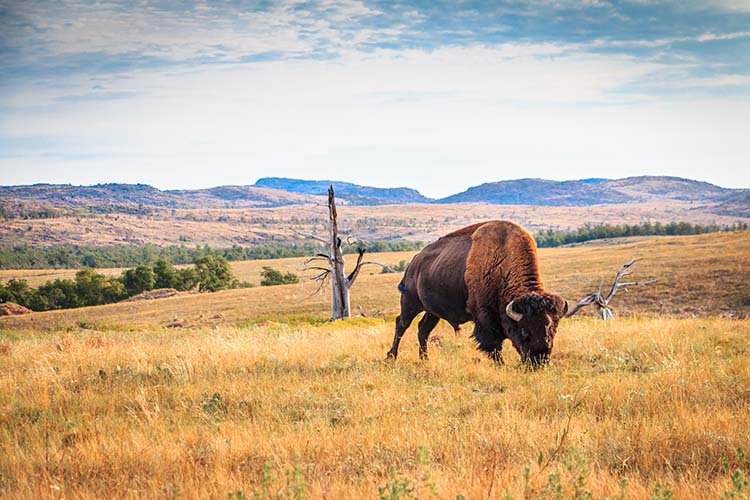Archives
Great Smoky Mountains Camping | Survival Life National Park Series
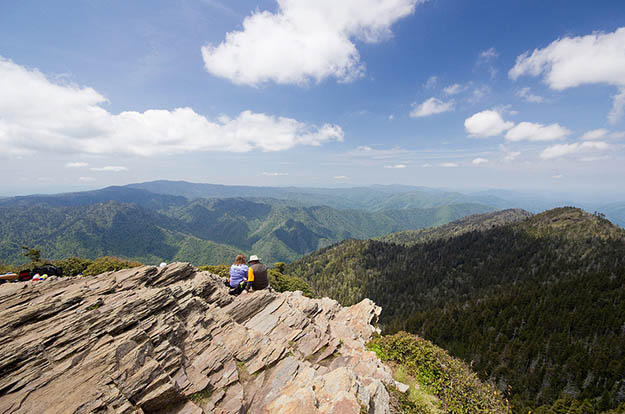
Thinking about a Great Smoky Mountains National Park camping trip? What are you waiting for?
There is not question that the Great Smoky Mountains is the most popular national park in the country. In fact, more than 10 million people visited the Smokies last year. The park is considered an international biosphere reserve by the United Nations because it has hundreds of species of mammals, birds, fish, amphibians and reptiles.
About Great Smoky Mountains National Park: Quick Facts
- The park covers an area roughly 800 square miles or 520,000 acres.
- It is located in the Haywood and Swain counties in North Carolina and in the Blount, Cocke and Sevier counties in Tennessee.
- Great Smoky Mountain was established as a national park on June 15, 1934.
- The Smokies is a hiker’s paradise with 800 miles of trails which includes seventy miles of the Appalachian Trail.
- Over a hundred native tree species call the Great Smoky Mountains home, more than can be found in the northern part of Europe.
- Before the European settlers arrived, the inhabitants of the park were Cherokees.
- The Smokies is known for being a haven for bears with a population of roughly 1,500.
- Other animals that can be seen here are woodchucks, turkeys, raccoons, elk and white-tailed deer.
- Thousand of different plants can be found in the Smokies from azaleas to mountain laurels, mosses to hornworts.
- Its name came from the smoke-like haze that envelops the mountains.
- The Great Smoky Mountain National Park also carries the distinction of being the Salamander Capital of the World; 30 different species are found here.
- Close to a hundred log buildings are scattered around the Smokies, which have either been restored or preserved.
Preparing for a Great Smoky Mountains National Park Camping Trip
Camping in the Smoky Mountains will definitely be fun as long as you are well-prepared.
Majestic as it may look, it is important to remember that the park is 95% forest. You will need to be ready for the possible hazards that come with camping in this environment. The following are some of the considerations:
Camping Facilities
You have many choices when it comes to campsites, from backcountry to frontcountry, group campgrounds to horse camps.
Fees and Permits
Not many national parks offer free entrance and the Smokies is one of them. However there are fees to pay if you are camping overnight. There are also permits needed for the said activity.
Weather
Spring is unpredictable especially in March, switching from sunny to snowy in a matter of hours. April is milder and May is warmer. Summer is hot and humid in the Smokies recording high 90s in low areas while it is more comfortable up in the mountains. Skies are clear and the weather is cool in the fall, giving cool nights and warm days. Winter is moderate but it can also be harsh in higher elevations.
Cellular Service
There are no cell towers operating within the Great Smoky Mountains National Park. Cellular service that may be picked up are coming from sites located outside the park. High elevation areas can access services but they can easily be obstructed by rocks, hill and even clouds. To put it simply, there is no stable cellular coverage in the Smokies.
Restaurants and Gas Stations
None of these can be found in the Smokies so be sure to fill up your gas tank before getting into the park. The same is true with food; bring plenty on your camping trip.
Black Bears
These are dangerous animals and the Great Smoky Mountains National Park has thousands of them. Bears are wild and unpredictable so it is best to be watchful. Maintain a safe distance in case you see a bear. Do not feed or annoy them.
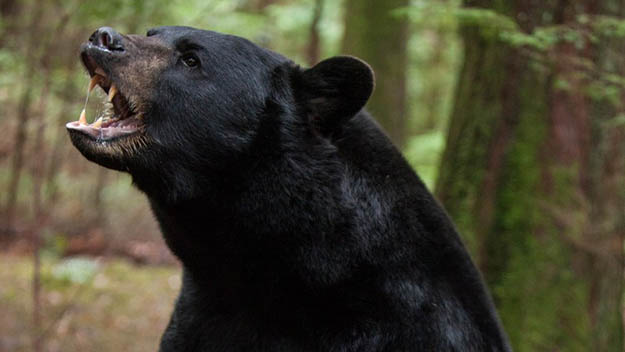
Seeing a bear might be an awesome experience on your Smoky Mountains camping but you need to be cautious.
Pets
Dogs are allowed in the Smokies but only in specified areas. Pet owners must keep them on a leash. Roads, picnic areas and campgrounds are open to dogs as well as the Oconaluftee River Trail and Gatlinburg Trail. In addition, dogs cannot be left in your car or recreational vehicle.
What to Pack for a Great Smoky Mountains National Park Camping Trip
DAYHIKING
Clothing:
- 1 synthetic baselayer T-shirt (dries faster than wool in the soggy Smokies)
- 1 pair synthetic hiking shorts (pants in colder weather)
- 1 synthetic, breathable midlayer shirt
- 1 synthetic puffy jacket or sweater
- 1 bombproof rainshell (don’t forget, or you’ll be sorry)
- 1 bombproof pair of rainpants
- 1 pair waterproof gaiters
- 1 rain hat
- Wool socks
- Undies of choice
- Sturdy hiking boots that can handle steep, rocky trails
- Sturdy sandals for creek crossings
- Shades and sun hat—but only if you’re heading to the high ridges
- Gloves/mittens and a hat if it’s cold
Gear:
- Backpack
- Map and compass or GPS
- Snacks
- Water
- First-aid kit (make sure it has blister dressings)
- Trekking poles
- Emergency gear (space blanket, firestarters, lighter, headlamp)
- Camera
- Field guide (with the thousands of plant, animal, and insect species, you’ll need it)
BACKPACK
- Add the following to the dayhiking list:
Clothing:
- 1 baselayer top for sleeping
- 1 baselayer bottom for sleeping
- 1 pair extra socks
- Camp shoes (I like waterproof Chacos because they double as creek-crossing shoes)
Gear:
- Backpack
- Tent (make sure it’s rainworthy and breathable for humid nights)
- Synthetic sleeping bag (15 to 30 degrees for three-season use)
- Inflatable sleeping pad
- Bandanna or camp towel for mopping up any rain puddles
- Stove and fuel
- Cookset
- Lighter and waterproof matches
- Bowl, spoon, mug
- Headlamp
- Water bottles/reservoir with treatment method of choice (there’s water everywhere!)
- Multitool Extra carabiner and stuffsacks for hanging a bear bag (many sites have cables)
- Zip-top bags
- Lip balm
- TP, trowel, and hand sanitizer
To know more, click here.
What to Do in Great Smoky Mountains National Park
Now that you’ve prepared and packed for your trip, it’s time to explore some of Great Smoky Mountains National Park’s beautiful sights and exciting activities. Here are some of our favorites:
1. Camping
The Great Smoky Mountains National Park Service maintains developed campgrounds at ten locations within the park. These campgrounds have restrooms with cold running water, flush toilets, fire grates and picnic tables. For the avid backpacker, backcountry camping is another option.
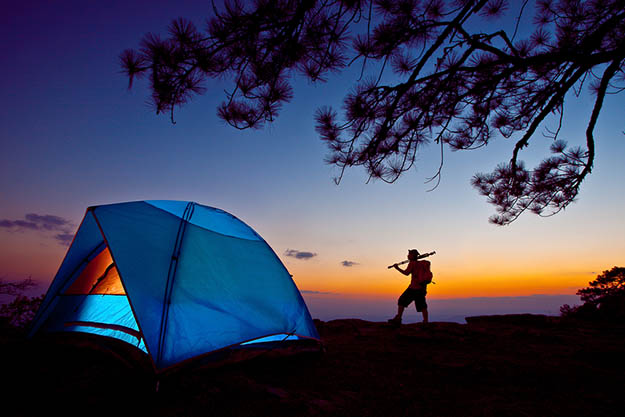
Whether you’re a prepper or survivalist, a Smoky Mountains camping trip is a great opportunity to hone your skills.
2. Mount LeConte
One of the Park’s finest features – from afar or up close – Mt. LeConte hosts five great hiking trails to the top. One of the most popular hikes to Mt. LeConte is the Alum Cave Bluff Trail. Mt. LeConte also boasts the only lodging within the Park: Mt. LeConte Lodge – Cabins. Accessible only by trail and available only by reservation, Mt. LeConte Lodge and the views of the Smokies Mt. LeConte affords the hardy hiker are well worth the effort. See more…
3. The Sugarlands
One of the prettiest parts of the Smoky Mountains, Sugarlands is a valley named after the area’s once dominant sugar maple trees and is extremely popular as a day trip destination from Gatlinburg. The area stretches from the aptly-named Roaring Fork in the east, all the way to the slopes of Sugarland Mountain in the west and is overlooked by the 5,000-foot Mount le Conte. Continue reading
4. Mountain Farm Museum & Oconaluftee Visitor Center
Located at the entrance to the Great Smoky Mountains National Park near Cherokee, see historic farm buildings is an open-air museum. A half-mile north historic Mingus Mill. See more…
5. Mingus Mill
The 1886 Mingus Mill , 2 miles west of Cherokee, a turbine-powered mill that still grinds wheat and corn much as it always has. The on-site Mountain Farm Museum is a restored 19th-century farmstead, complete with barn, blacksmith shop and smokehouse (with real pig heads!), assembled from original buildings from different parts of the park.
6. Clingman’s Dome
At 6,643 feet, Clingmans Dome is the highest point in the Great Smoky Mountains National Park. It is the highest point in Tennessee, and the third highest mountain east of the Mississippi. Only Mt. Mitchell (6,684 feet) and Mt. Craig (6,647), both located in Mt. Mitchell State Park in western North Carolina, rise higher. The observation tower on the summit of Clingmans Dome offers spectacular 360° views of the Smokies and beyond for visitors willing to climb the steep half-mile walk to the tower at the top.
7. Appalachian Trail
The 2,200-mile journey from Maine all the way down to Georgia is as scenic as it is daunting. If you want to pull a “Forrest Gump” and go from the start to finish, you deserve major bragging rights and will join the ranks of other “thru-hikers.” However, you can also just check out the Smoky Mountains’ portion of the trail, which does not disappoint. It is home to the 5,499-foot Standing Indian Mountain (along the Nantahala River) and Clingman’s Dome, another one of our picks for the top 10 Smoky Mountain attractions. Read more…
8. Cades Cove
Cades Cove is a large valley surrounded by mountains that was once home to Native Americans and, subsequently, a group of settlers somewhat isolated from the outside world. This popular area in Great Smoky Mountains National Park that features a number of preserved 19th-century homesteads and churches along an 11-mile one-way loop that includes a visitors center and a variety of other trails radiating oRut from it. It’s also an easy spot to find a variety of wildlife, ranging from deer to black bears. See more…
9. Road to Nowhere
A six-mile scenic drive that was planned in the early 1940s and never completed, the Road to Nowhere, which ends at the mouth of a tunnel, offers a wealth of scenic mountain views, wildlife and hiking trails.
10. Whitewater Rafting & Tubing
Whitewater rafting and tubing down a cool mountain river are some of the most popular things to do in the national park. Whitewater rafting is available from mid-April to early November. Several rafting posts can be located near the park. This sport is enjoyed by children and adults. Tubing is a fun activity and is available from Memorial Day through Labor Day. Click here for the full post.
11. Fishing
The park has about 2,115 miles of streams within its boundaries, and protects one of the last wild trout habitats in the eastern United States. Fishing is permitted year-round from 30 minutes before sunrise to 30 minutes after sunset. The park requires a Tennessee or North Carolina fishing license, which can be purchased in nearby towns or online. Read more…
12. Biking
There are many opportunities to bike on roads in the Great Smoky Mountains National Park, but none as popular as the 11 mile one way Cades Cove Loop Road. This loop provides bicyclists with excellent opportunities for wildlife viewing and touring of 19th century home sites. Deer and black bear are the most popular animals sighted along the way.
13. Experience Mountain Culture
Visit restored mountain cabins and tour “ghost towns” in the park, with old frame and log buildings preserved much as they were 100 years ago. Read more…
14. Hiking and Waterfalls
The best way to experience the Smokies is to do what the original settlers and explorers did: hit the trails. From the original Appalachian Trail to breathtaking wildflower walks, there are 150 Smoky Mountain trails covering 800 miles of pristine backcountry. Waterfalls, wildlife, valleys and vistas are everywhere. Keep reading
15. Picnics
The national park has many picnic areas for visitors to get away to break bread with family or friends. Pack up a meal and find a natural nook for couples or a table outside or under a pavilion(some can be reserved in advance) in one of eleven designated picnic grounds, or simply plunk down on a rock off the trail or scenic overlook and enjoy! Click here for additional information. See more…
16. Horseback Rides
Guided horseback rides are available at four concession horseback riding stables in the park from mid-March through late November. Rides on scenic park trails are offered lasting from 45 minutes to several hours. All rides proceed at a walking pace. Read more…
Want to know more about Great Smoky Mountains National Park? Check out the video below!
Did we miss anything in our Great Smoky Mountains National Park camping guide? Let us know in the comments!
Follow us on Facebook, Instagram, Twitter, Tumblr, and Pinterest!
***Disclaimer: The contents of this article are for informational purposes only. Please read our full disclaimer.***
Editor’s Note: This post was originally published on November 12, 2019, and has been updated for quality and relevancy.
-

 Do It Yourself7 months ago
Do It Yourself7 months agoParacord Projects | 36 Cool Paracord Ideas For Your Paracord Survival Projects
-

 Do It Yourself9 months ago
Do It Yourself9 months agoHow To Make Paracord Survival Bracelets | DIY Survival Prepping
-

 Do It Yourself9 months ago
Do It Yourself9 months ago21 Home Remedies For Toothache Pain Relief
-

 Do It Yourself10 months ago
Do It Yourself10 months agoSurvival DIY: How To Melt Aluminum Cans For Casting
-

 Exports8 months ago
Exports8 months agoAre Switchblades Legal? Knife Laws By State

